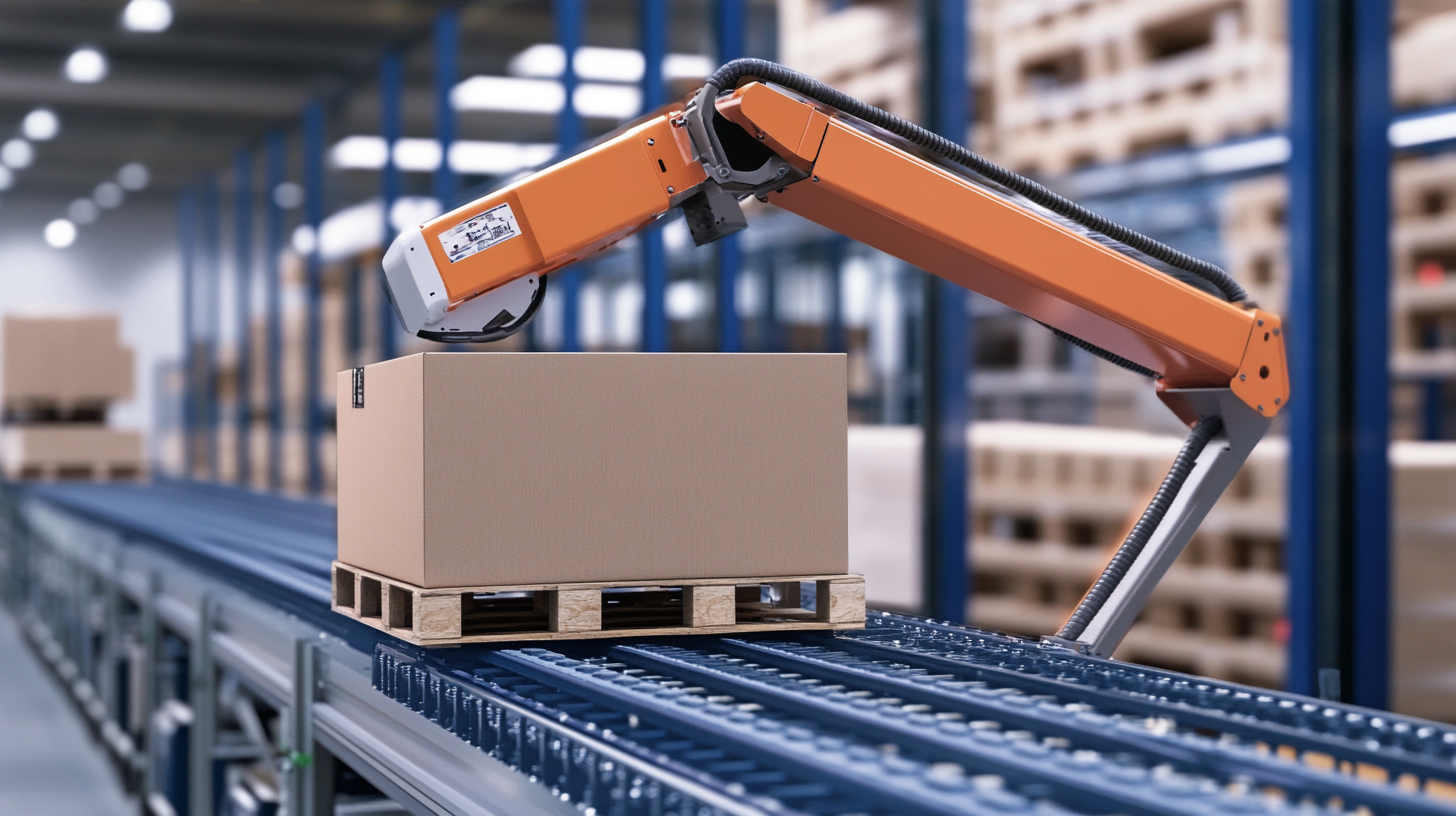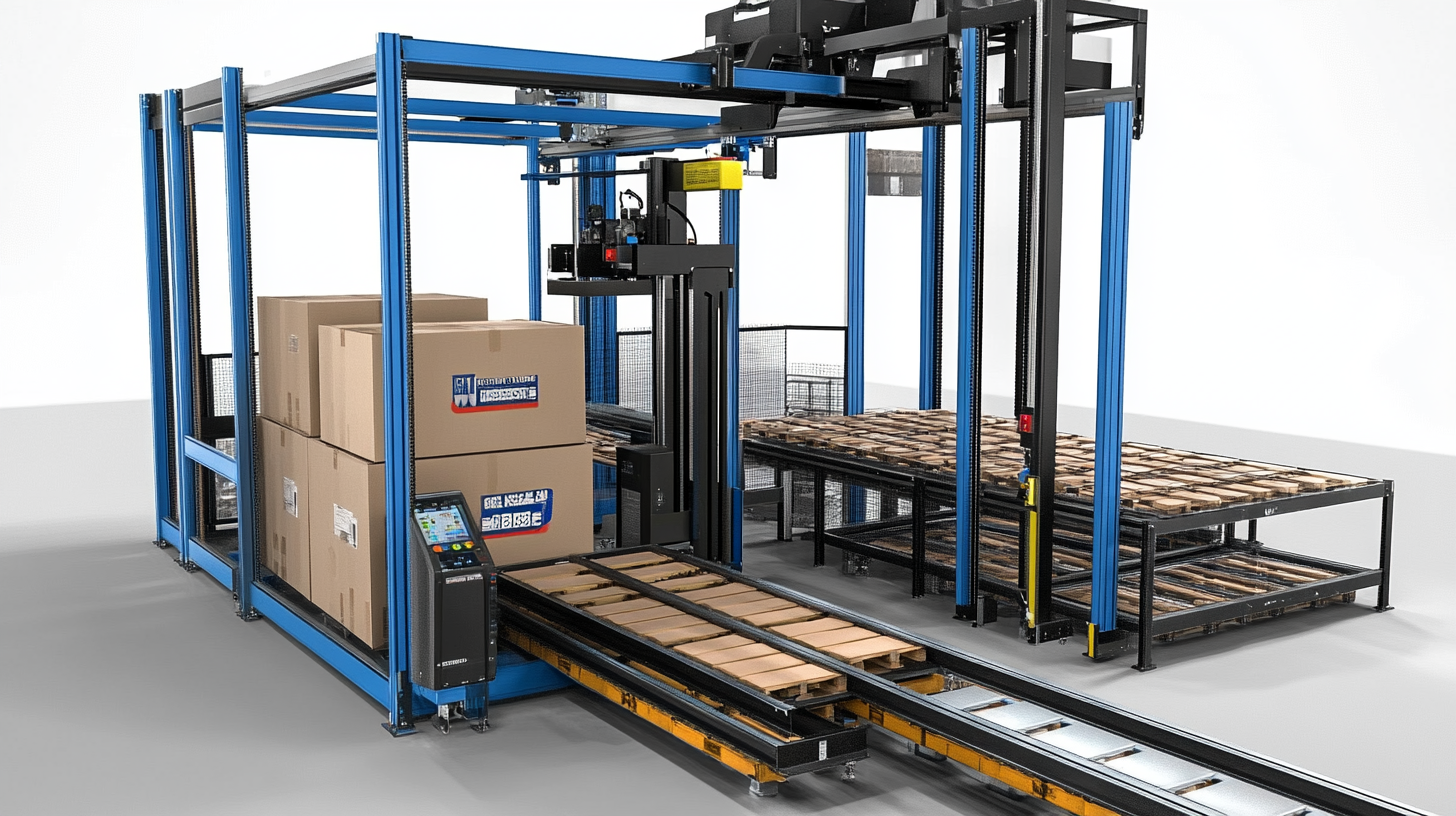The Ultimate Guide to Choosing the Best Automatic Palletizer Machine for Your Business Needs
In today's rapidly evolving manufacturing landscape, the need for efficiency and precision in logistics is paramount, making the selection of an Automatic Palletizer Machine a critical decision for businesses aiming to optimize their operations. According to a recent report by MarketsandMarkets, the palletizer market is projected to reach USD 2.5 billion by 2025, driven by the increasing demand for automation across various industries, including food and beverage, pharmaceuticals, and consumer goods. By integrating an Automatic Palletizer Machine, companies can not only enhance their throughput and reduce labor costs but also improve safety and product handling. This guide will delve into the essential factors to consider when selecting the right palletizer for your business needs, ensuring you make an informed choice that aligns with your operational goals and contributes to your bottom line.

Understanding the Basics of Automatic Palletizer Machines and Their Benefits
Automatic palletizer machines have revolutionized the logistics and packaging industries by streamlining the process of stacking products on pallets. These machines are designed to improve efficiency and reduce manual labor, leading to considerable cost savings. According to a report by Grand View Research, the global palletizing machine market is expected to reach $6.52 billion by 2025, with a compound annual growth rate (CAGR) of 4.9%. This growth reflects the increasing demand for automation in various sectors, including food and beverage, pharmaceuticals, and consumer goods.
The benefits of incorporating automatic palletizers into business operations are numerous. For instance, these machines not only enhance productivity by increasing the speed of palletizing but also improve the accuracy of stacking, reducing the likelihood of product damage during handling. A study by the International Society of Automation noted that automating palletizing tasks can lead to a 30% increase in labor efficiency. Additionally, automatic palletizers can easily adapt to different product dimensions and weights, making them versatile solutions that can grow with your business needs. This adaptability ensures that companies can maintain high levels of operation efficiency, even as product lines evolve.
Key Factors to Consider When Choosing an Automatic Palletizer for Your Operations
When selecting the best automatic palletizer for your operations, it's essential to consider several key factors that align with your business needs. First, assess the throughput requirements of your facility. The palletizer should meet your production speed without causing bottlenecks. This directly influences efficiency and can significantly impact your bottom line, especially in industries where time and productivity are critical.
Another vital aspect is the flexibility of the palletizer. In a landscape where product lines and packaging sizes continuously evolve, having a system that can adapt to various products is crucial. An automatic palletizer that supports multiple configurations ensures that you can respond swiftly to market changes, maintaining a competitive edge. Moreover, integration capabilities with existing systems and equipment are important; the palletizer should seamlessly fit into your overall operational framework, thereby enhancing the effectiveness of your logistics processes.
Additionally, the shift towards smart logistics underlines the importance of choosing a palletizer that incorporates advanced technology. As the industry moves toward automation, investing in a palletizer with intelligent features can provide insights into your operations, optimize workflows, and reduce labor costs. It’s no longer about just acquiring equipment; it's about finding solutions that propel your business forward in a rapidly evolving marketplace.
The Ultimate Guide to Choosing the Best Automatic Palletizer Machine for Your Business Needs
| Feature | Description | Example Value | Importance Level |
|---|---|---|---|
| Throughput Rate | The number of pallets produced per hour. | 120 pallets/hour | High |
| Footprint Size | The space required for the palletizer. | 2000 x 1500 mm | Medium |
| Flexibility | Ability to handle various pallet sizes and weights. | Supports pallets from 500 to 3000 kg | High |
| Ease of Operation | User-friendliness of the control system. | Touchscreen control panel | Medium |
| Maintenance Requirements | How often and how difficult it is to maintain. | Monthly inspections needed | High |
| Cost | Initial investment and long-term operating costs. | $75,000 | High |
| Safety Features | Measures in place to ensure safe operation. | Emergency stop buttons, safety guards | High |
Comparing Different Types of Automatic Palletizers: Advantages and Disadvantages
When it comes to selecting the right automatic palletizer for your business, it’s essential to evaluate the different types available, as each comes with its own set of advantages and disadvantages. The three primary types of automatic palletizers are conventional, robotic, and hybrid systems. Conventional palletizers tend to be faster and more efficient, typically handling a higher volume of products. However, they usually require significant floor space and a higher initial investment, potentially making them less suitable for smaller operations.
Robotic palletizers, on the other hand, offer flexibility and adaptability, accommodating various product sizes and shapes. They have become increasingly popular in industries looking for versatility and space-saving solutions. According to a recent industry report, the robotic palletizing market is projected to grow at a compound annual growth rate (CAGR) of 10% from 2021 to 2026, indicating a shift towards automation in handling processes. However, the downside is often a slower speed compared to conventional systems, which may not meet demands for high-volume production.
Hybrid palletizers combine the strengths of both conventional and robotic systems, offering a balanced solution that maximizes efficiency while minimizing space. This type of palletizer can be an excellent choice for businesses transitioning to automated processes, as they capitalize on the operational strengths of both systems. When evaluating your options, consider not only the operational efficiency but also the specific needs of your production line and how they align with the characteristics of each type of palletizer.
The Ultimate Guide to Choosing the Best Automatic Palletizer Machine
Evaluating Performance and Efficiency: Metrics to Assess Your Palletizer Options
When evaluating performance and efficiency in automatic palletizer machines, it's crucial to consider several key metrics that reflect their operational capabilities. One of the primary factors is throughput, which indicates the number of pallets processed per hour. A high throughput is essential for businesses looking to maximize their production output without sacrificing quality. Additionally, assessing cycle time—the time it takes to complete one full cycle of loading, stacking, and unloading—provides valuable insight into the machine's efficiency and can highlight potential bottlenecks in your current production line.

Another important metric is uptime, which refers to the total time the palletizer is operational without interruptions. High uptime means lower maintenance costs and greater reliability, crucial for businesses that depend on consistent performance. Monitoring the mean time between failures (MTBF) can help in understanding how durable the machine is under normal operating conditions. Lastly, energy consumption should not be overlooked; machines that optimize energy use can significantly reduce operational costs while still meeting production goals. By focusing on these performance indicators, businesses can make informed decisions about which automatic palletizer machine best fits their needs.
Selecting the Right Supplier: What to Look for in an Automatic Palletizer Manufacturer
When selecting an automatic palletizer manufacturer, it's crucial to assess their experience and expertise in your specific industry. As highlighted in recent discussions about dairy processing, the diversity in operational needs means that not every solution fits all. A reputable supplier should understand the nuances of your business and provide tailored solutions that not only meet efficiency demands but also ensure compliance with food safety standards.

Additionally, consider the flexibility of the supplier’s equipment. The right palletizer should be adaptable to various types of products and packaging configurations, allowing your operations to scale and evolve without frequent overhauls. Ask potential suppliers about their customization options and support services to ensure they can cater to your unique production requirements.
Engaging with manufacturers who are attuned to industry trends and innovations can provide added value, enabling your business to stay competitive in a rapidly changing market.
